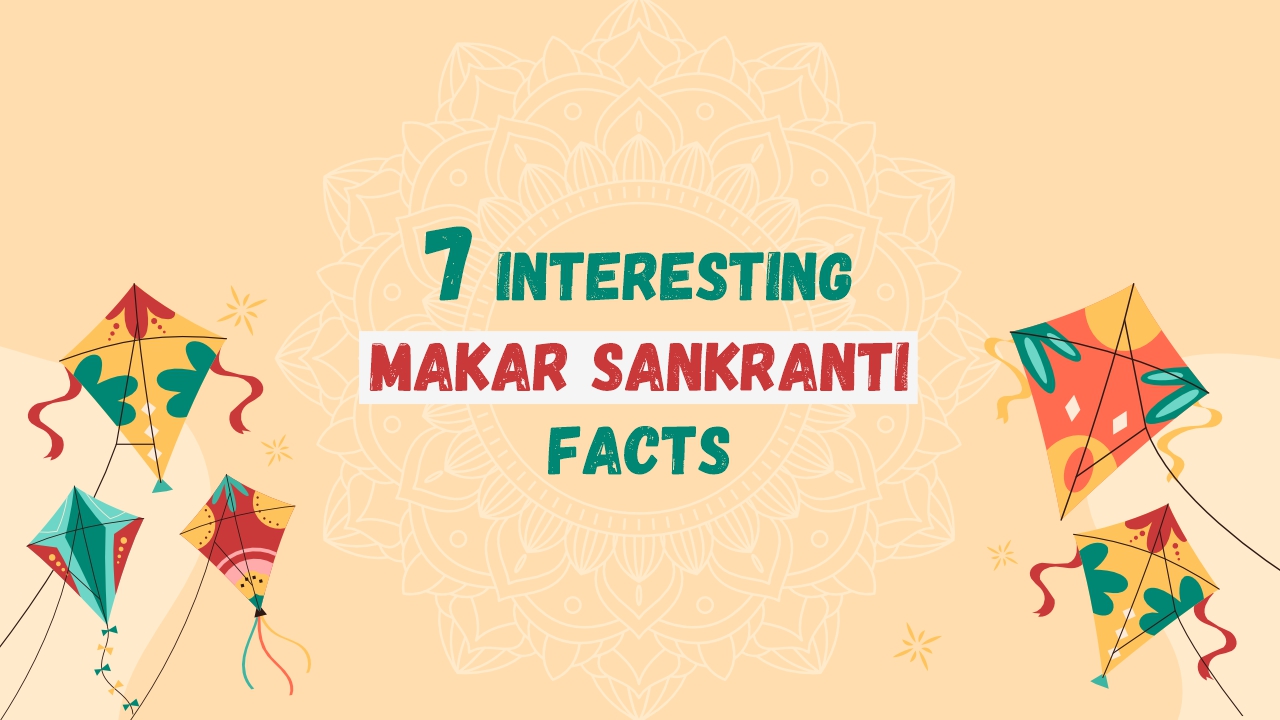Makar Sankranti, a festival deeply rooted in the Hindu tradition, stands out as a rare celebration based on the solar cycle. This vibrant festival encompasses a myriad of fascinating customs, beliefs, and rituals that make it a unique and joyous occasion for millions of people across India. This festival is also deeply rooted in Indian consciousness because it marks the start of harvest season. Because of this fact, it is celebrated across the country with different names and traditions.
Let’s unravel multiple interesting facts about Makar Sankranti, exploring its facets and shedding light on the significance that makes it an extraordinary celebration.
7 amazing facts about Makar Sankranti
1. A rare Hindu festival based on the solar cycle:

Unlike many Hindu festivals tied to the lunar cycle, Makar Sankranti is distinct as it follows the solar cycle. Sankranti is one cycle of the sun entering one Rashi (the constellation of the zodiac) from the previous one; in total, there are 12 Sankranti. Makar Sankranti festival marks the transition of the sun into the zodiac sign of Capricorn (Makar in Sanskrit), symbolising the end of winter and the onset of longer days.
2. Celebrated on the same day of the Gregorian calendar every year:
One intriguing aspect of Makar Sankranti is its consistency in falling on the same day of the Gregorian calendar every year, i.e., January 14th. This predictability adds a sense of continuity and anticipation to the celebrations.
3. Different names in different states:
India being an agriculture-dominated country, the harvest festival is celebrated everywhere with different names. Here is a list of the names of Makar Sankranti and the states they are associated with:
- Kashmir – Shishur Saenkraat
- Haryana, Punjab, Delhi – Lohri
- Bihar, Jharkhand, Rajasthan – Sankrant
- Himachal Pradesh – Magha Saaji
- Assam – Magh Bihu
- Uttar Pradesh – Khichdi
- Gujarat – Uttarayan
- West Bengal – Poush Parbon
- Madhya Pradesh – Sukarat
- Odisha – Makara Chaula
- Maharashtra, Chhattisgarh – Makara Sankranti
- Andhra Pradesh, Telangana – Makara Sankranti
- Karnataka – SUGGI Habba
- Tamil Nadu – Pongal
- Kerala – Makara Vilakku
4. Tradition of boiling milk on Makar Sankranti:
Another unique fact about Makar Sankranti is the existence of the tradition of boiling milk until it overflows, symbolising abundance and prosperity. This act is performed to invoke blessings for a bountiful harvest and a prosperous year ahead.
5. Significance of sesame seeds and Jaggery:

Sesame seeds and jaggery play a central role in Makar Sankranti celebrations. It is customary to consume sweets made of sesame and jaggery during this festival. These ingredients are believed to provide warmth to the body and protect against the harsh winter.
6. The world’s largest pilgrimage after every 12 years on Makar Sankranti:

Makar Sankranti marks the beginning of the world’s largest pilgrimage, known as the Kumbh Mela, which occurs every 12 years. Mainly held at 4 Kumbh Mela Places in India, i.e., Prayagraj, Haridwar, Nashik, and Ujjain. It rotates every 12 years at these 4 places. The Kumbh festival is a celebration of knowledge, asceticism, and devotion rather than a market or fair. The celebration, which takes the form of a congregation of miniature India, brings together people of all castes and creeds. Millions of pilgrims gather to bathe in the sacred rivers, believing that it cleanses them of sins and ensures spiritual salvation.
Whether it is the year of Kumbh Mela or not, people in many states take a dip in holy rivers to wash off their sins and donate to the needy during this auspicious time.
7. End of the inauspicious month in the Hindu calendar:
Makar Sankranti also heralds the end of the inauspicious month of Pausha, as per the Hindu calendar. Devotees believe that by celebrating this festival, they can rid themselves of negative energies accumulated during this period. In Telangana and Andhra Pradesh, people partake in a ritual of igniting a bonfire to dispose of old household items to concentrate on new things, symbolising change or transformation.
Conclusion:
Makar Sankranti stands as a testament to the rich cultural heritage of India, weaving together ancient traditions, celestial phenomena, and regional diversities. The festival’s essence lies not only in its rituals but also in the spirit of unity and joy that permeates communities during this auspicious time. As the sun embarks on its journey into the northern hemisphere, Makar Sankranti beckons a renewal of hope, prosperity, and the promise of brighter days ahead.
🚀 Stay informed on the latest updates and expert insights! Join our Telegram channel for valuable content.
📌 Join us on Telegram: Narayana Educational Institutions – Official
Don’t miss out! Follow us on Instagram for exclusive updates and behind-the-scenes content.
👉 Instagram: The Narayana Group
Stay connected, stay informed, and thrive with Narayana Educational Institutions!


Respected sir
This document is really very useful and full of facts that many of us don’t know. I loved reading it.
Wonderful information I so much things got to know by reading this and I can explain easily or convey this information to my kids , family ,friends and others .
Good to know about our traditional festivals with the scientific meaning….
Convinced totally convinced article or great info thank you
Regards ,
Roopashree shreenivas Desai 🙏
Nice article
Very intresting facts are really and wipen all worries ,doubts about festival etc.,
Excellent information which was useful to child
From these facts our ward could know about our tradition and what we should do in this festival and can gain knowledge from these facts
Allover it is very good
Thanks for this informative article.
This is the amazing facts
I like this
Yeah my daughter got to know the significance of makar sankranti